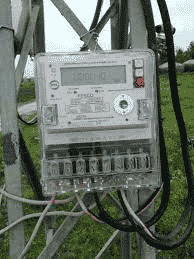
Pakistan Institute of Development Economics
- Home
Our Portals
MenuMenuMenuMenuMenuMenuMenu - ResearchMenuMenuMenuMenuMenuMenuMenu
- Discourse
- The PDR
- Our Researchers
- Academics
- Degree Verification
- Thesis Portal
- Our Portals

RCET Policy: A Boon or A Bane for Pakistan?
Pakistan introduced a Regionally Competitive Energy Tariff (RCET) in late 2018 to tap the potential of the textile sector. The objective being to enhance competitiveness, particularly within the region. From October 2018 onwards, a tariff of USD 6.5/MMBTU was offered for Regassified Liquefied Natural Gas (RLNG). Electricity tariff of 7.5 cents/kWh charged from January 2019. Electricity tariffs suddenly revised upwards in September 2020 and a new rate of 9 cents/kWh charged. In this context, the recent outshining performance of the textile sector can be partially attributed to the RCET policy.
Ahmed Waqar Qasim recently observed that overall textile exports experienced an annual jump of 30.6% in March 2021. This extraordinary performance of the textile sector can attributed partially to the government’s supporting policies. These include introduction of regionally competitive energy tariffs, elimination of duty and taxes on industrial raw materials, lower interest rate, and paying off pending refunds to exporters. The shrinking of regional textile markets such as India and Bangladesh because of the COVID-19 pandemic, has also diverted global attention towards Pakistan.
Shaaf Najib points out that while RCET has proven to be beneficial for textile sector exports, there are calls for removing it. The proposed replacement is a Duty Drawback on Local Taxes and Levies (DLTL) scheme for only export-oriented units. This suggestion does not appear to draw on existing knowledge of the ground realities of industries. It will undoubtedly reverse all the recent progress made by textile sector since introduction of RCET.
In Pakistan’s textile sector, energy is the leading component of cost. Among all the factors that make the textile sector of Pakistan regionally non-competitive, energy tariff is at the core. More precisely, it makes up around 35-40% of conversion cost in textile. Therefore it is essential any way forward must ensure the availability of energy at regionally competitive tariff rates.
Some in the government are pointing towards the fiscal burden of the RCET policy and categorically calling it a subsidy. These stakeholders are also demanding a withdrawal of the policy to address fiscal concerns. Another opinion calls for the distinction between the actual unit cost of energy service and systemic inefficiencies.
The basic argument is that tariffs are high because of numerous reasons, including distorted pricing strategy, and irrational cross-subsidization. Resultantly, policymakers attempt to cover these inefficiencies in setting the unit energy price. Naturally, this raises the question of why a foreign importer would pay for our systemic inefficiencies? Why should the foreign importer pay for our line losses or Neelam-Jhelum surcharge?
The unit cost of service of electricity was around PKR 13.7/kWh (8 cents/kWh; with a USD/PKR exchange rate of 1/157.35) in Pakistan for the year 2020. This unit cost included energy purchase price (EPP), capacity purchase price (CPP), as well as transmission and distribution losses. Yet, industrial units were charged a unit price of around PKR 21.90/kWh (14 cents/kWh) in 2020. The difference of unit service cost and unit price shows existence of cross-subsidization across sectors in our tariff setting system.
Moreover, since energy is the leading component in conversion cost, especially for spinning and weaving; any change in the energy tariff affects the relative competitiveness of Pakistani products in the international market through two channels. First is the direct impact, accounting for cost of power and fuel that the unit bears during the conversion process. Second is the indirect impact, the change in input price because of a change in power tariff for upstream units.
Researchers at PIDE recently ran a simulation exercise to assess whether the RCET policy is decisive for the textile sector. They adjusted the cost component by removing the RCET for a sample of eight (8) textile products. They compared our price in the international market without RCET with that of regional countries.
The results show that the upstream industry (spinning and weaving) will become regionally uncompetitive if the RCET policy is withdrawn. The spinning sector will not only lose international market share but also put domestic sales in jeopardy. While the downstream industry will remain competitive even without RCET rates but will lose the price rankings.
So, in a nutshell, RCET is not a fiscal burden, rather its withdrawal will be – in terms of lost export earnings. The COVID-19 pandemic, where it has damaged economic activity severely, has also provided Pakistan with a unique chance to re-orient our textile sector according to the needs of the time. Government policies that are supportive like the RCET policy, will play a key role and would act as a catalyst in this re-orientation. Therefore, the government should continue with the RCET policy and explore other supportive policies that encourage value-addition and more foreign earnings instead of abandoning the existing support.
Download full PDF


